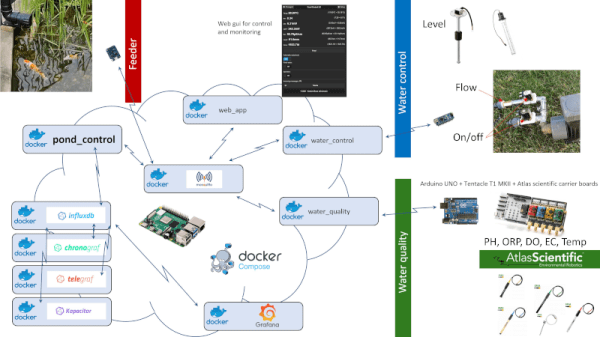Sometimes off-the-shelf solutions to a problem don’t meet your expectations. That’s what led [TomGoff] to build his own solar pond fountain.
This build features a lot of creative reuse of materials [TomGoff] already had on hand, like the end of a cable reel for the platform and a wheelbarrow inner tube for flotation. A 3D printed nozzle in the center of this apparatus is attached to a 12 V water pump and the whole thing is controlled by an Arduino running 30 seconds on and 3 minutes off to conserve battery power.
A hand-built perfboard contains a light dependent resistor (LDR) to tell the Arduino not to run at night, the relay for the pump, and a battery charge monitor. Be sure to check out the full write-up to see the video of the Tinkercad electronics simulation as well as the code. A 20 W solar panel keeps the whole thing charged so you don’t have to run mains power out to your pond.
If you need more solar projects for your garden, how about this Charmander lamp or a solar powered irrigation system?













